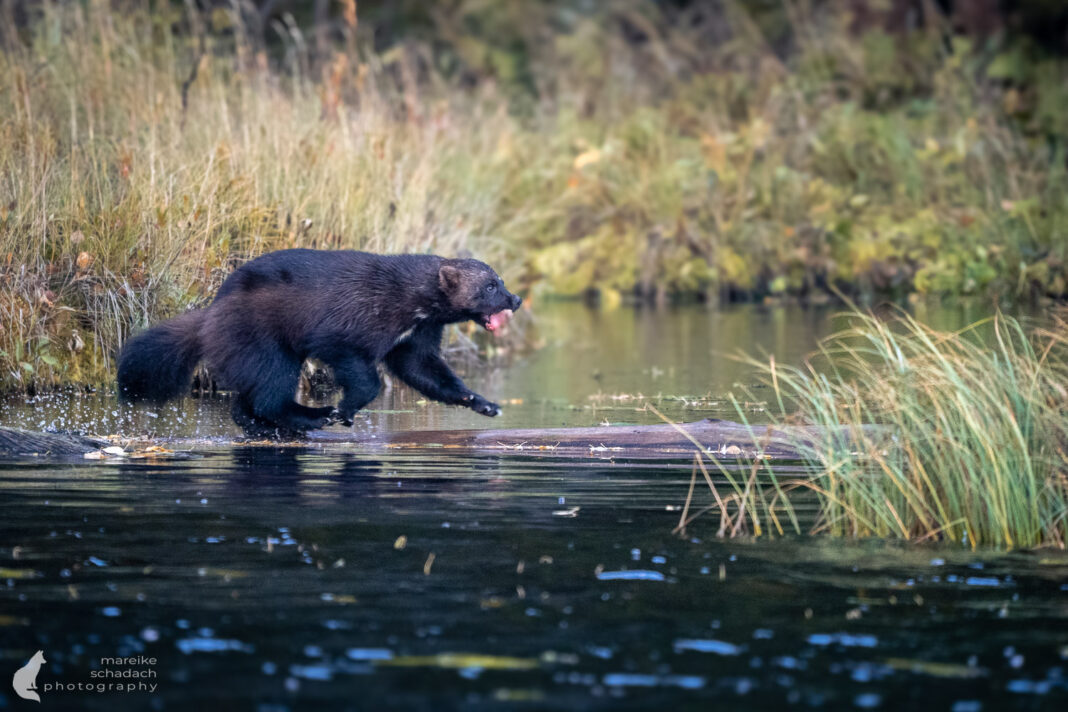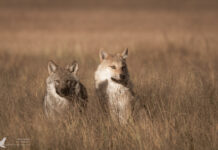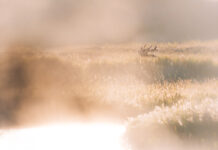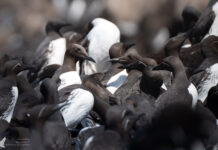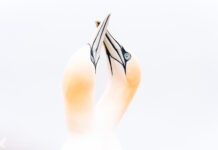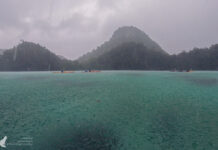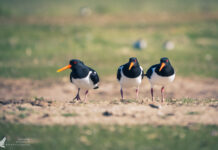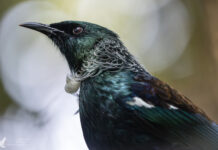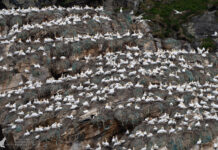Finland. It is dark. I am alone in my small photography hideout in the middle of the Finnish taiga. Only the gas stove burns quietly in the background. But then – a smacking sound breaks the nighttime silence. It is quite close. I get up and quietly switch on the night vision device that is tucked into one of the window slits. A wolverine. Less than five meters away, a massive, muscular, thick-furred fur, individual raindrops glistening on the tips of its hair. Its powerful teeth tug at a piece of meat that it holds with one paw. It looks up briefly, its eyes white in the night vision device, staring at me. Goosebumps run down my spine. Then it continues eating. Shortly afterward, the chattering of a family of mallards fills the darkness.
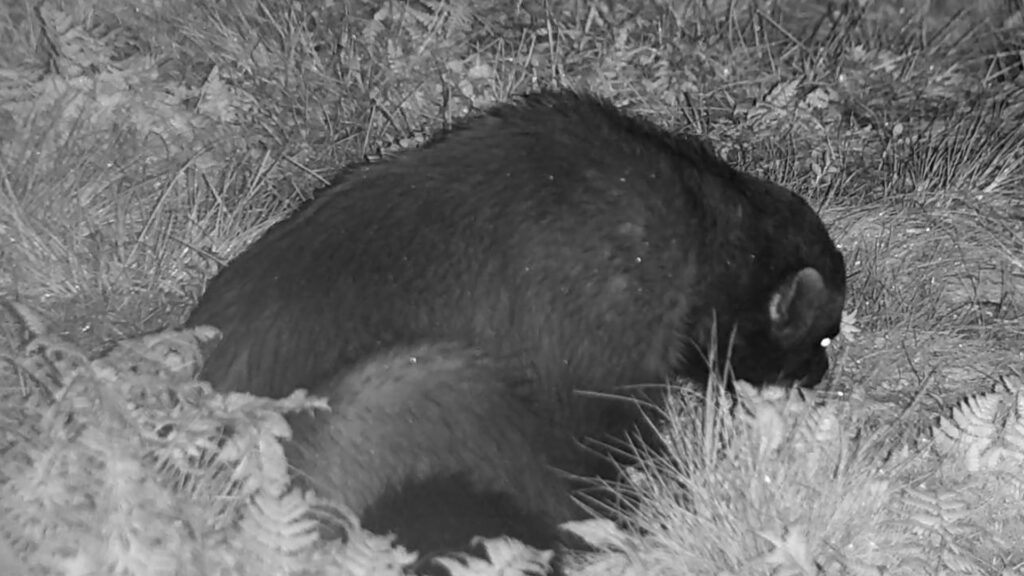
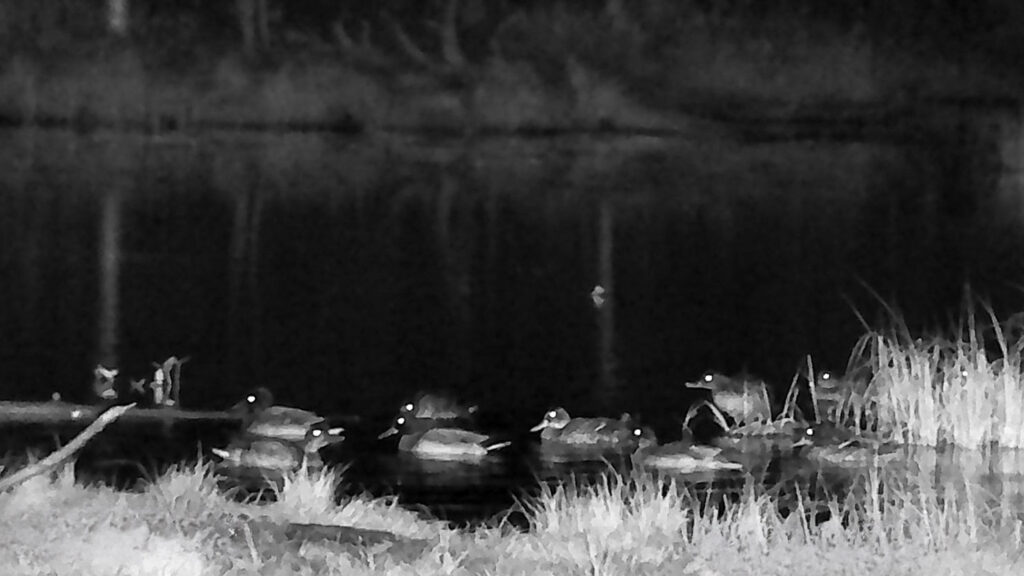
Unassigned, unpaid advertising. The article contains affiliate links.
Autumn in the wild Taiga
I am traveling through the Finnish taiga, near Lieksa in the east of the country. It is autumn, the time of ruska, when birch trees glow golden and the moors shine in all shades of red. The nights are already quite cold, and there are no more mosquitoes. Mushrooms are sprouting, lingonberries and blueberries are ripe, and end up in my cereal every morning. Today, my path takes me along gravel roads deep into the dense forest to the base camp of Eero Kortelainen, alias Erä-Eero. Keljänpuro Lodge is an old logger's cabin from the 1950s that was renovated by Eero himself. Eero initially offered various outdoor activities here, and since 2005 he has also been offering wildlife viewing. Over the years, Erä-Eero has become known as the world's best place to observe wolverines, a shy and rare animal that is difficult to observe in the wild. There are observation huts and photo hides at various locations, where I have settled in for the next two nights.
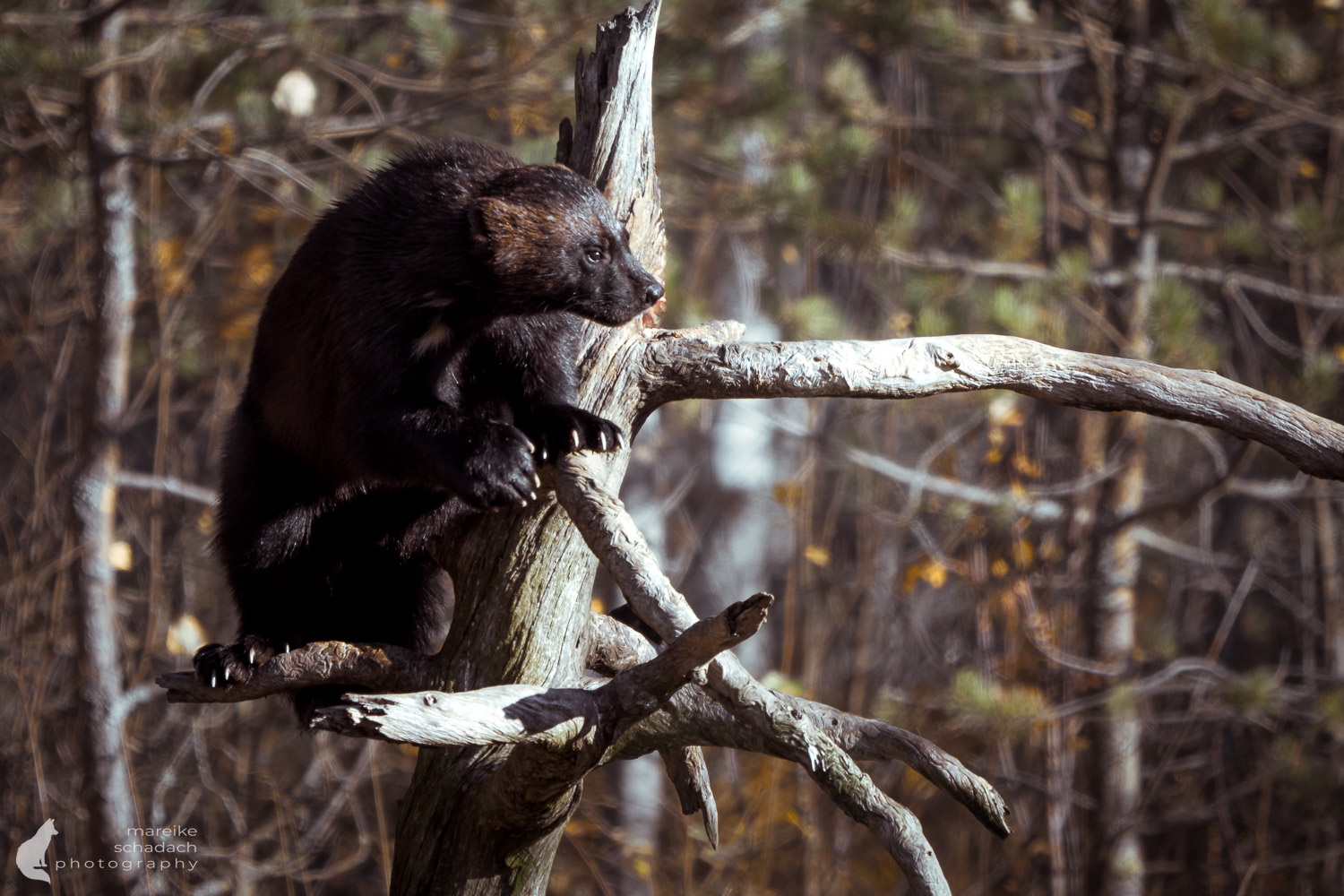
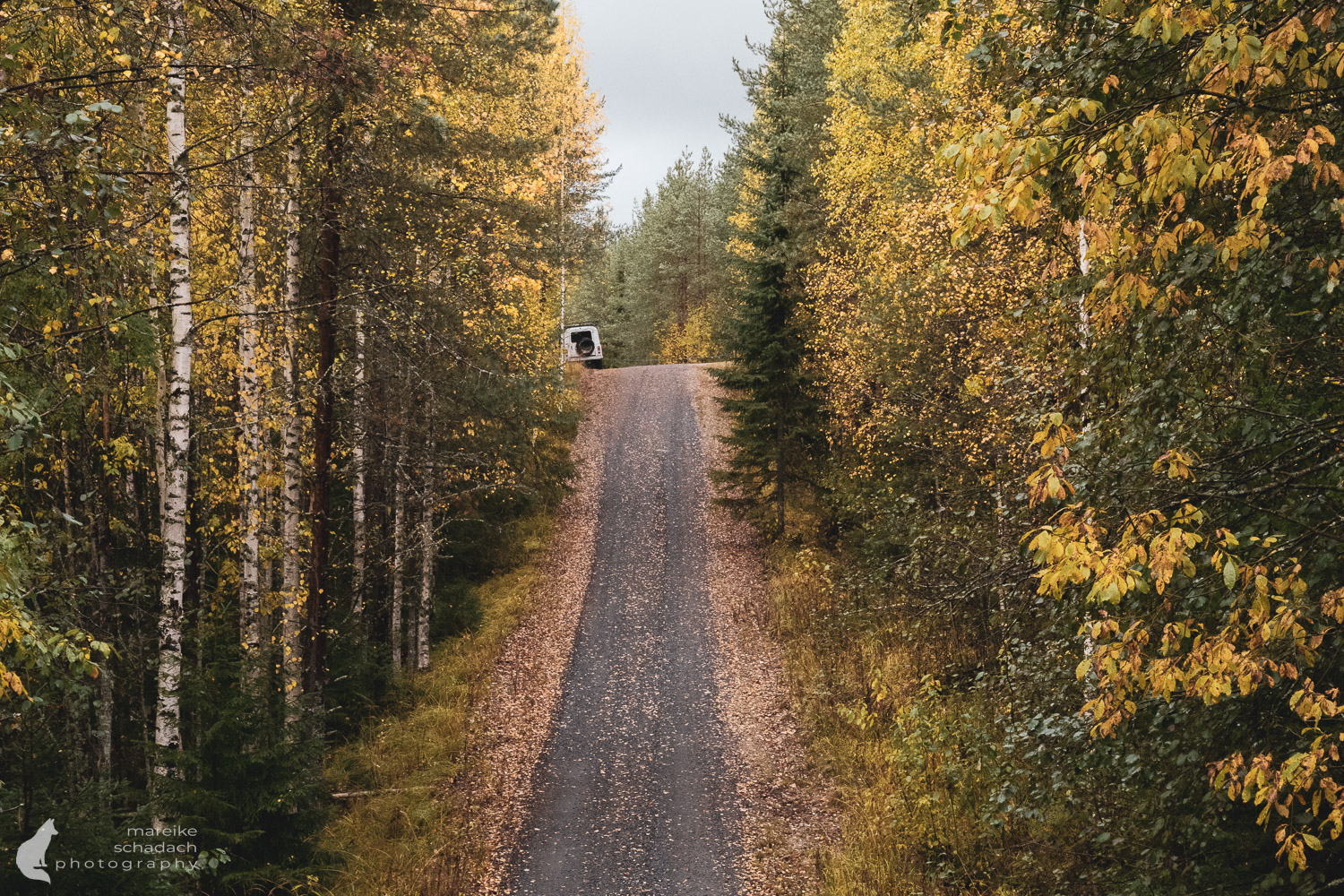
Welcome to Erä-Eraeo
I am warmly welcomed with steaming coffee. Keljänpuro Lodge is rustic and cozy, and the animal pictures on the walls make me want to set off on a wildlife viewing trip right away. But first, Sini gives me a briefing. I learn more about the hides, the rules to follow there, and how my evening and the next morning will unfold. Then I borrow a pair of night vision goggles and pack my snack box and thermos flask into my car. Eero and Sini drive ahead, and I follow in my own car. After about six kilometers, we pass a barrier and park our cars in front of a small wooden hut at Uuronlampi, a beautiful moorland lake surrounded by high hills.
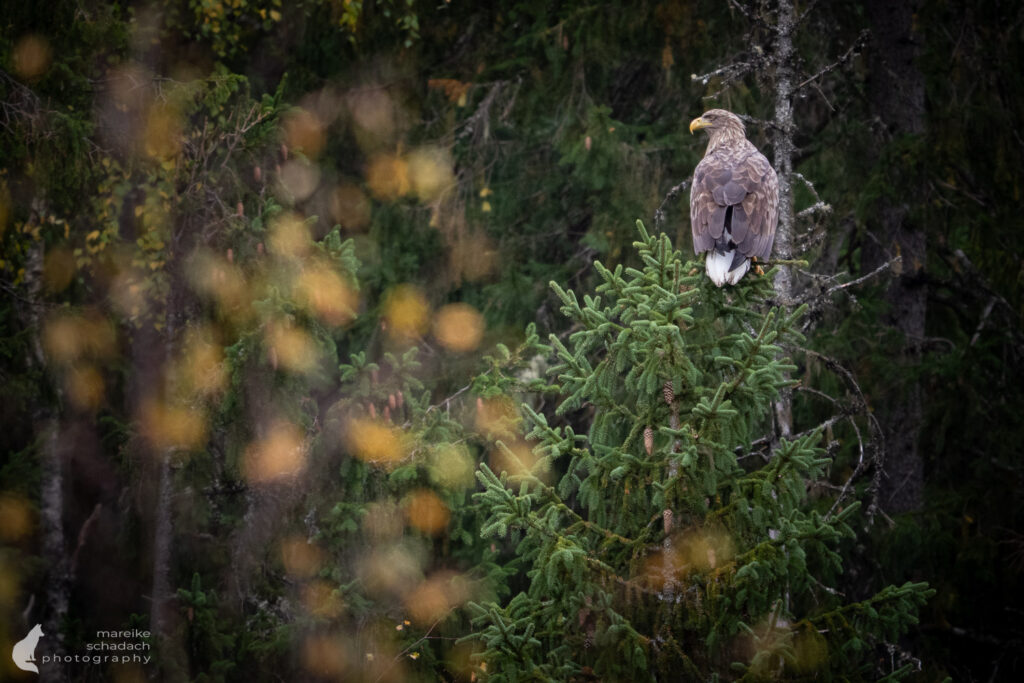
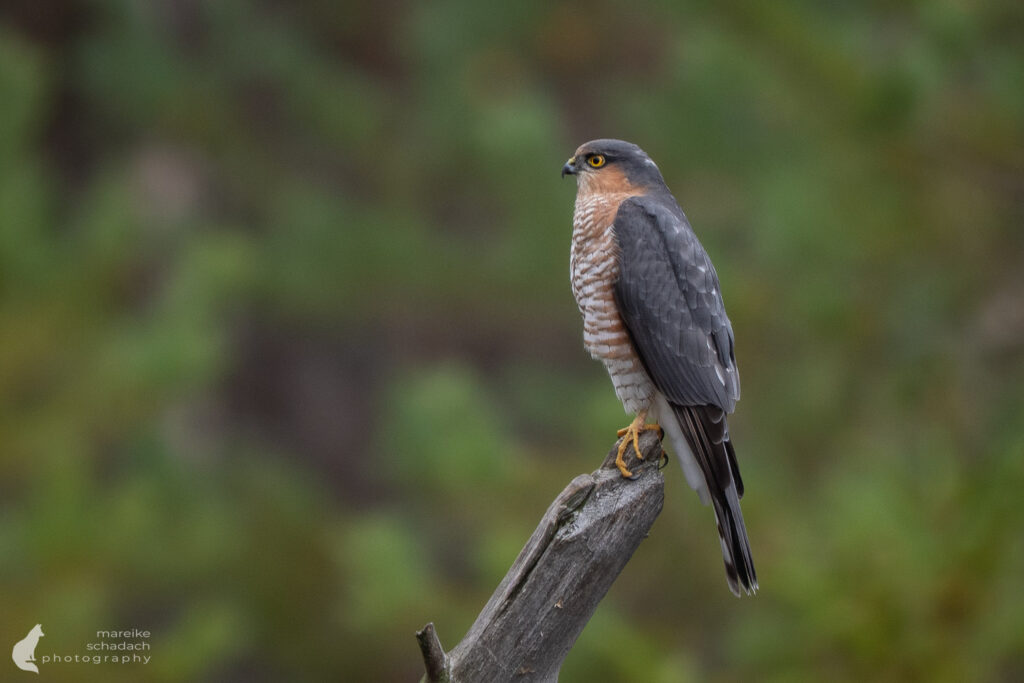
I climb out, excited. The wooden hut is a luxurious observation hut with large windows, comfortable armchairs, and a stove. From here, you can look down a slope to a meadow, behind which lies a small lake. To the right are three small photo hides, and to the left of the meadow is the forest. As I am the only guest, I have free choice and select the rear photo hide with a view of the lake and meadow. While Eero and Sini lay out food to attract the animals, I settle into my hide. The cameras are quickly put in position, and the bed and two chairs are covered with all sorts of stuff. It takes a while to get everything in the right place for the night, so that I can find it even in the dark. Because at night, the lights stay off. Otherwise, I'll scare away the wild animals. I turn on the small gas stove and inspect the toilet bucket behind the curtain. Everything you need is there.
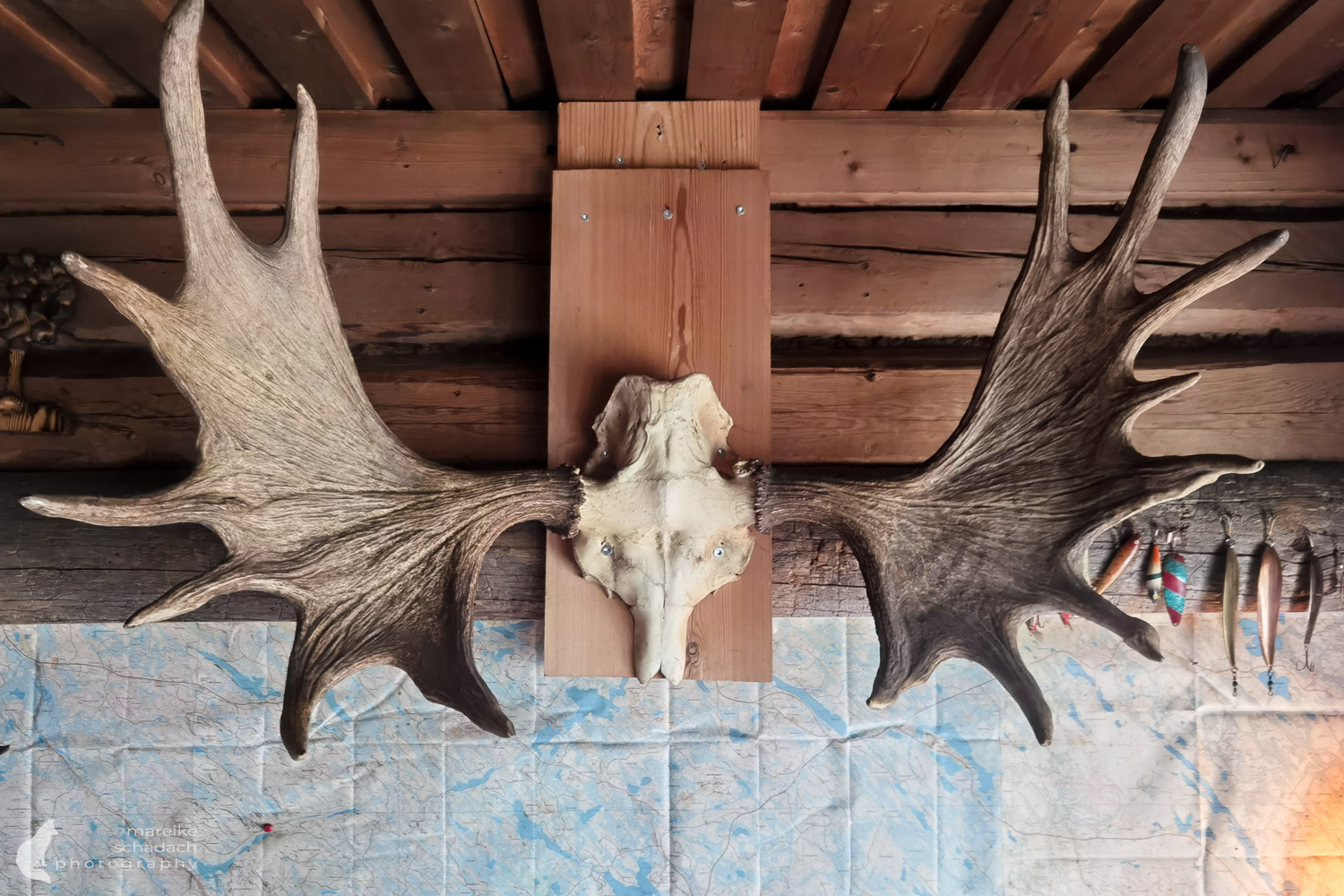
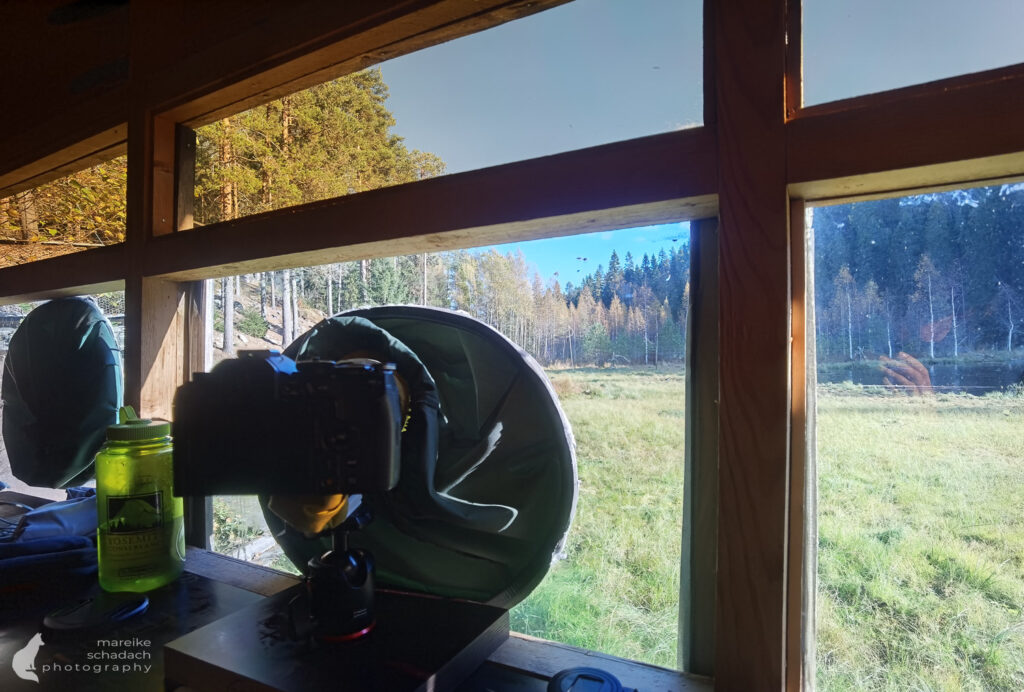
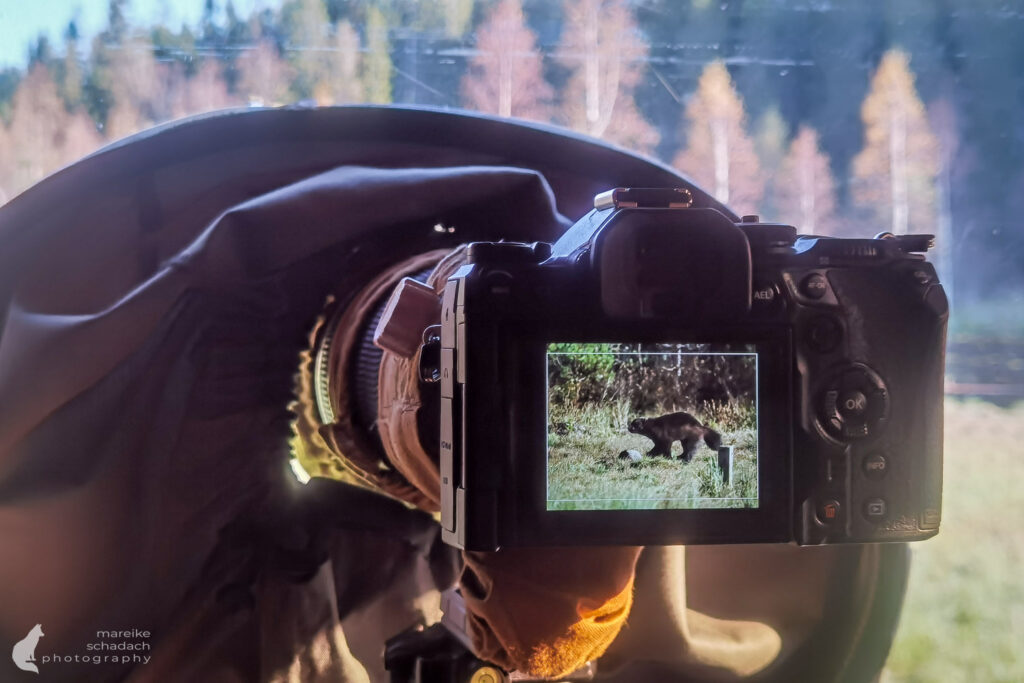
Encounters in the Dark
No sooner have Eero and Sini disappeared in their car than calm returns. Only ravens and jays can be heard, their cawing echoing across the lake. After a while, a dark shadow flits across the scene. The wolverine. Broad-built, crouched low, with flowing, powerful movements. The white-tailed eagle watches everything from a safe distance from the top of a pine tree. I hadn't expected it to appear so quickly and enjoy watching it through my camera.
At dusk, three young wolves appear at the edge of the forest. Curious, but cautious, and with their tails tucked between their legs. They watch the wolverine, but remain at a safe distance. The wolverine is unimpressed by the wolves and continues to eat. The wolves retreat.
Later, when night has fallen over the forest, the night vision device reveals a new world: animals with white, ghostly eyes roam the darkness. I can watch the three wolves for a long time. Even without the wolverine, they are very cautious. They probably know who is coming: two large, white eyes are getting closer and closer out of the dark forest – a bear! The wolves run away, and the bear also disappears silently into the thicket. Around midnight, I turn off the stove and go to sleep.
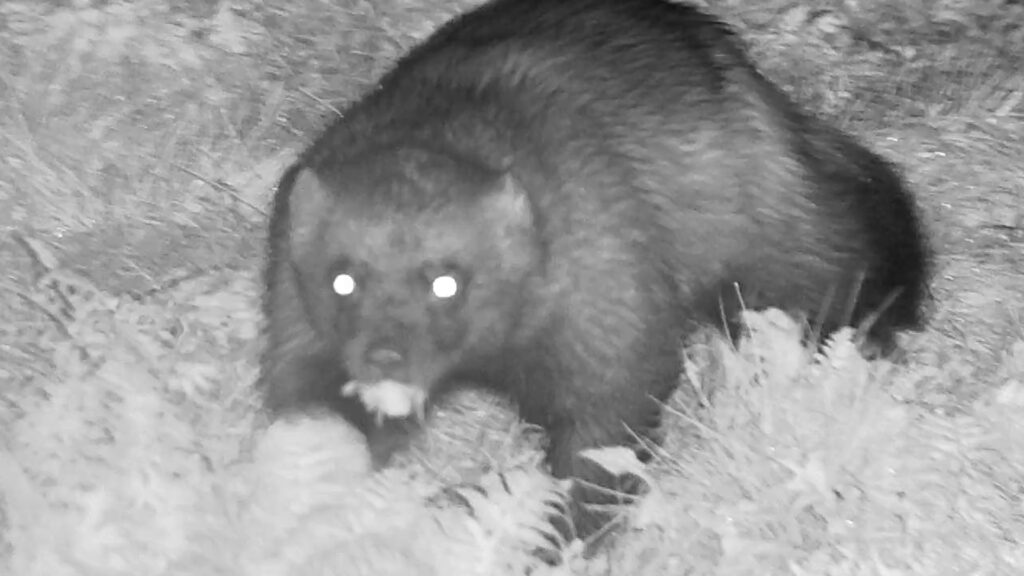
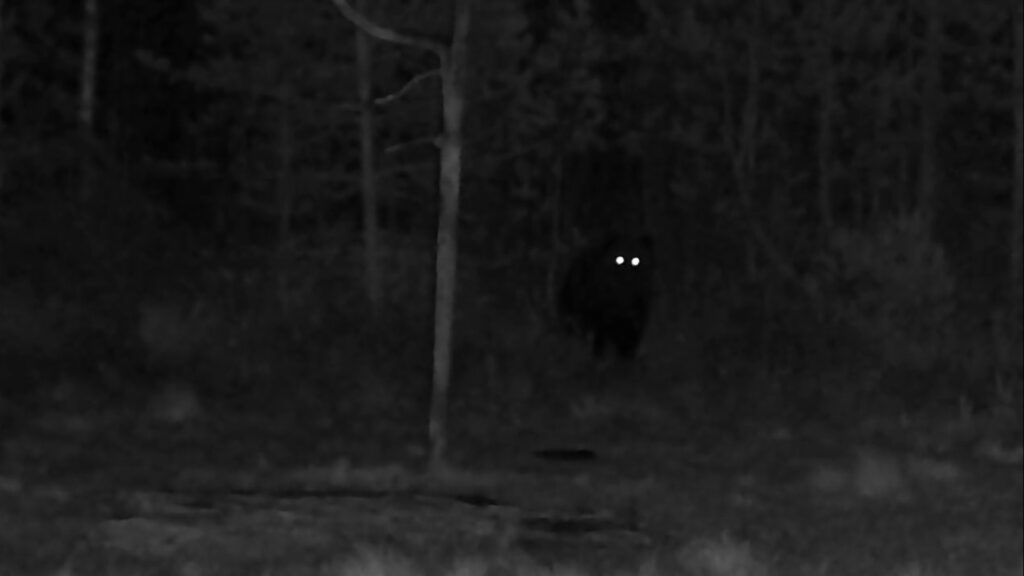

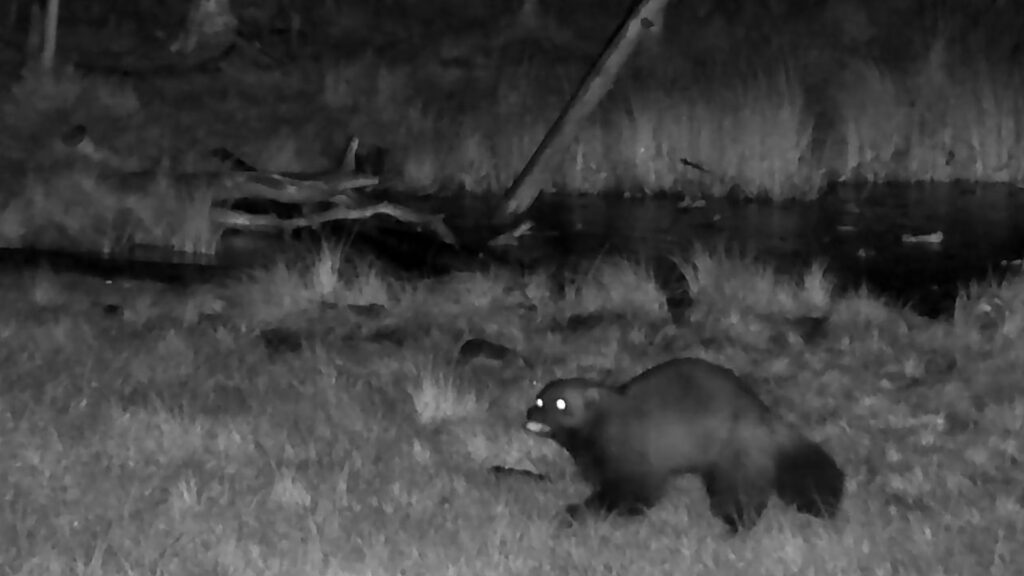
Dawn and Bear Tracks
In the morning, the wolverine is sitting in front of the hut again, searching for the remains of the evening. I pour myself some coffee—lukewarm, but better than nothing. After the wolverine has retreated into the dense forest, I pack up and walk up the slope to my car. I sing a song quietly so that no animals in the vicinity are frightened by my sudden appearance. Only now do I notice the huge pile of bear droppings on the road. I hurry to my car and drive back to the log cabin.
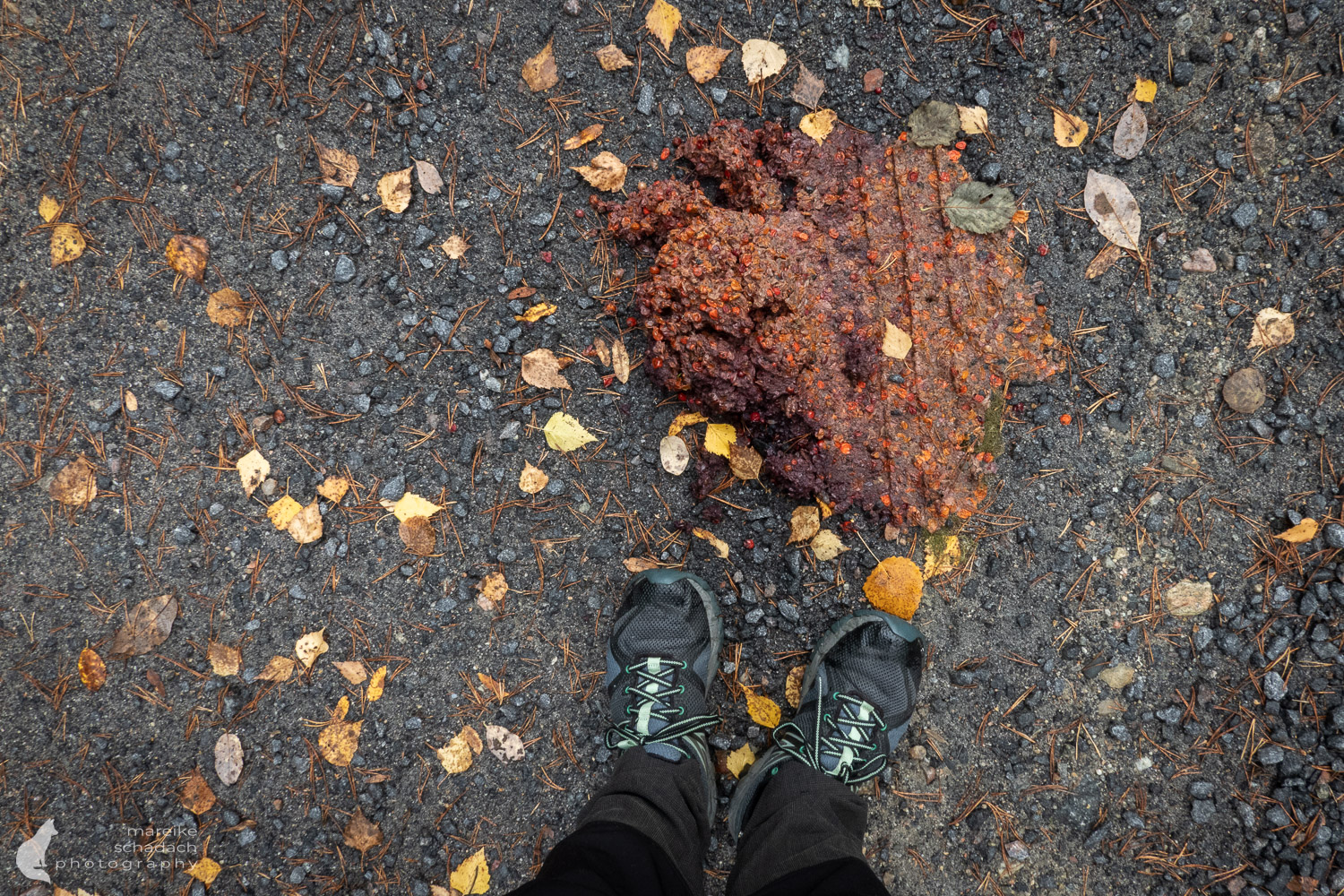
A typical Finnish breakfast awaits me at base: coffee, juice, porridge with fresh cloudberries, eggs, and Karjalanpiirakka , which are Karelian pies filled with rice pudding. Delicious! I recount my observations and am still quite excited. While my batteries are charging at the solar-powered charging station, I am already looking forward to my second night of observation.

Species Portrait: The Wolverine – Gulo gulo, the “Bear Marten”
While bears and wolves take center stage in eastern Finland, the wolverine usually remains in the shadows. But Gulo gulo, the “bear marten,” is a fascinating loner. It is the largest member of the marten family and one of the rarest predators in Europe. Its stocky, muscular body, broad skull, and thick, oily fur make it perfect for life in the snow and cold. Adult males can weigh up to 32 kilograms, with males significantly heavier than females. Despite its size, the wolverine is a skilled climber and a tireless wanderer that can cover long distances. Its diet consists of carrion, small mammals, birds, and occasionally reindeer. In winter in particular, it moves skillfully across the snow, making many other animals easy prey. It stores food, which it hides under snow or moss. This may be why it is also known as the glutton, greedy stomach, or gluttonous throat.
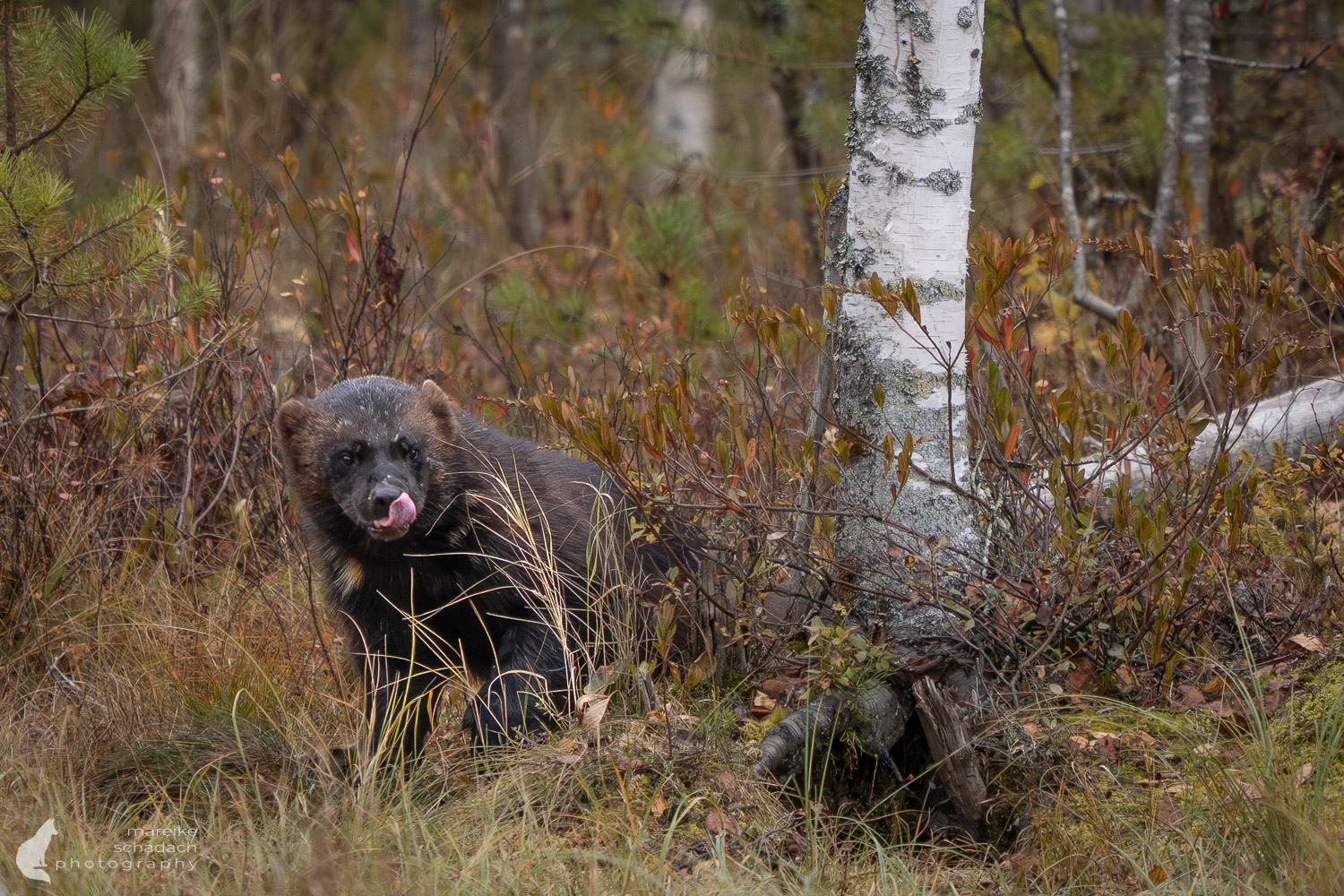
Wolverine Population in Finland
The Finnish wolverine population numbers around 400 individuals and has spread further south from its traditional range in eastern and northern Finland. The wolverine has been strictly protected in Finland since 1982. Thanks to this consistent protection and scientific monitoring, the population has slowly stabilized. Compared to the early 1990s, the wolverine population has increased about tenfold. Monitoring is carried out using camera traps, DNA samples from hair and feces, and reports from local wildlife observers. Nevertheless, the population remains fragile: the animals need huge territories of up to 730 square kilometers in largely unbroken landscapes, which have become rare in Europe.
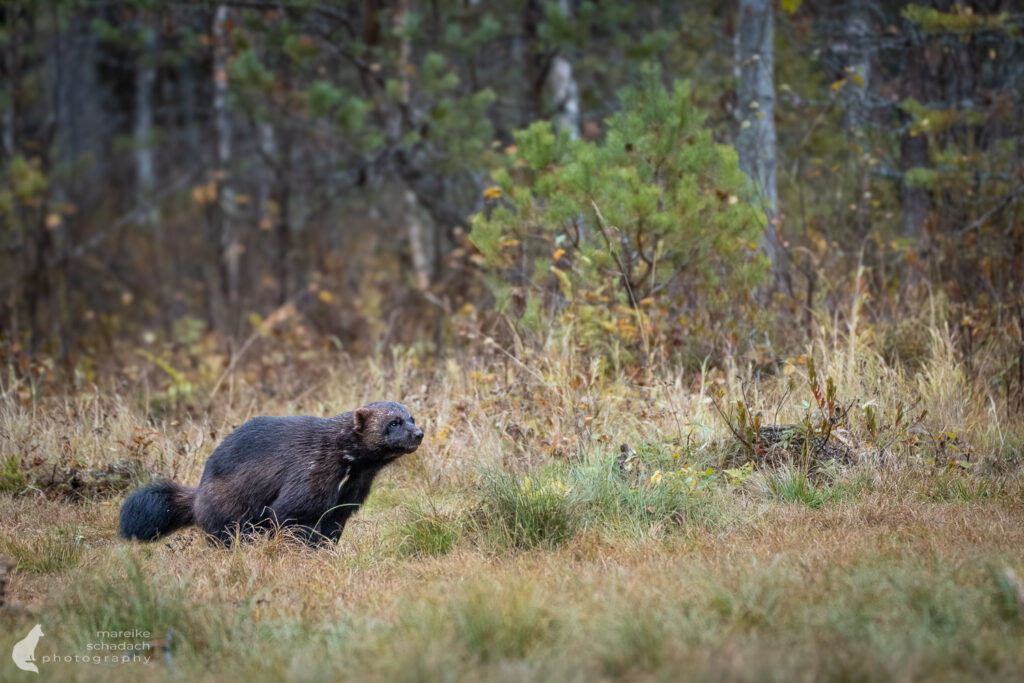
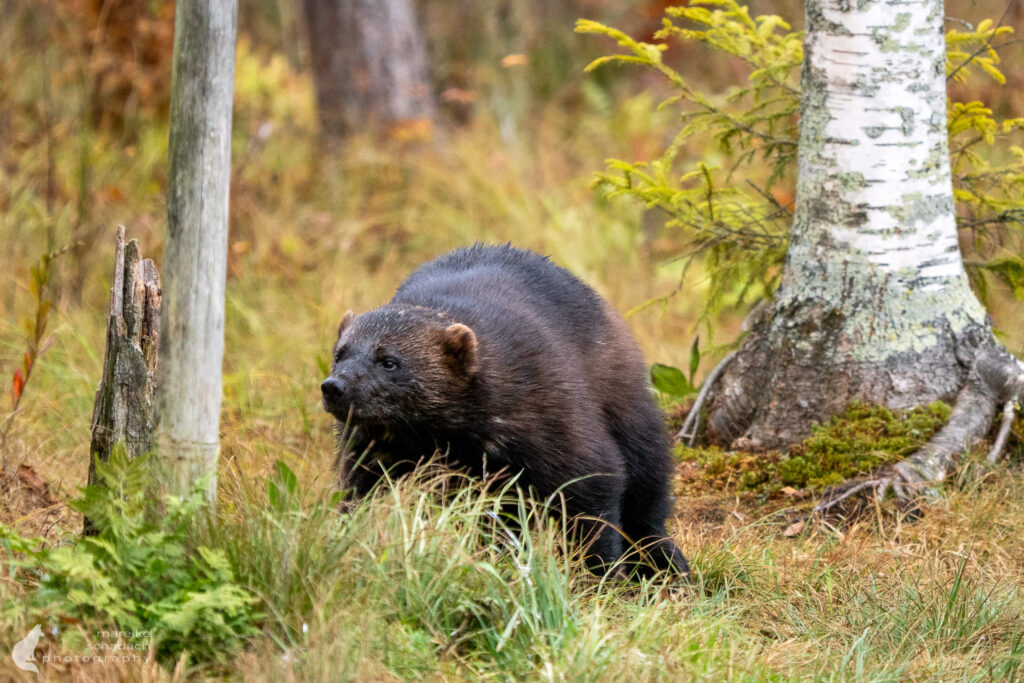
Myths and Legends
In the traditional worldview of the Sami, nature is not merely a backdrop, but is animated: animals, stones, rivers, and mountains possess their own “personhood.” This animistic belief, in which every living thing has spiritual significance, continues to shape Sami culture to this day.
Der Vielfraß – auf Nordsamisch gearpmát The wolverine – called gearpát in Northern Sami – occupies a special place in this belief system. Although it appears less frequently in traditional stories than, for example, the bear (guovža) or the raven (ráibár), in many regions of Lapland it is considered an animal to be treated with respect and caution. In older traditions, its name was sometimes paraphrased or avoided because it was believed that saying it aloud could bring bad luck – a taboo that also existed for other powerful wild animals.guovža) oder der Rabe (ráibár), gilt er in vielen Regionen Lapplands als ein Tier, das man mit Respekt und Vorsicht behandelt. In älteren Überlieferungen wurde sein Name teils umschrieben oder vermieden, da man glaubte, das Aussprechen könne Unglück bringen – ein Tabu, das auch bei anderen mächtigen Wildtieren bestand.
In northern Scandinavian folklore, the wolverine is considered the epitome of endurance, cunning, and independence. It represents a force that cannot be tamed – a creature that finds food even in the depths of winter and defies even stronger animals. In stories from Lapland and northern Norway, it is described as a tireless wanderer that knows no fixed boundaries and survives in the wilderness where others fail.
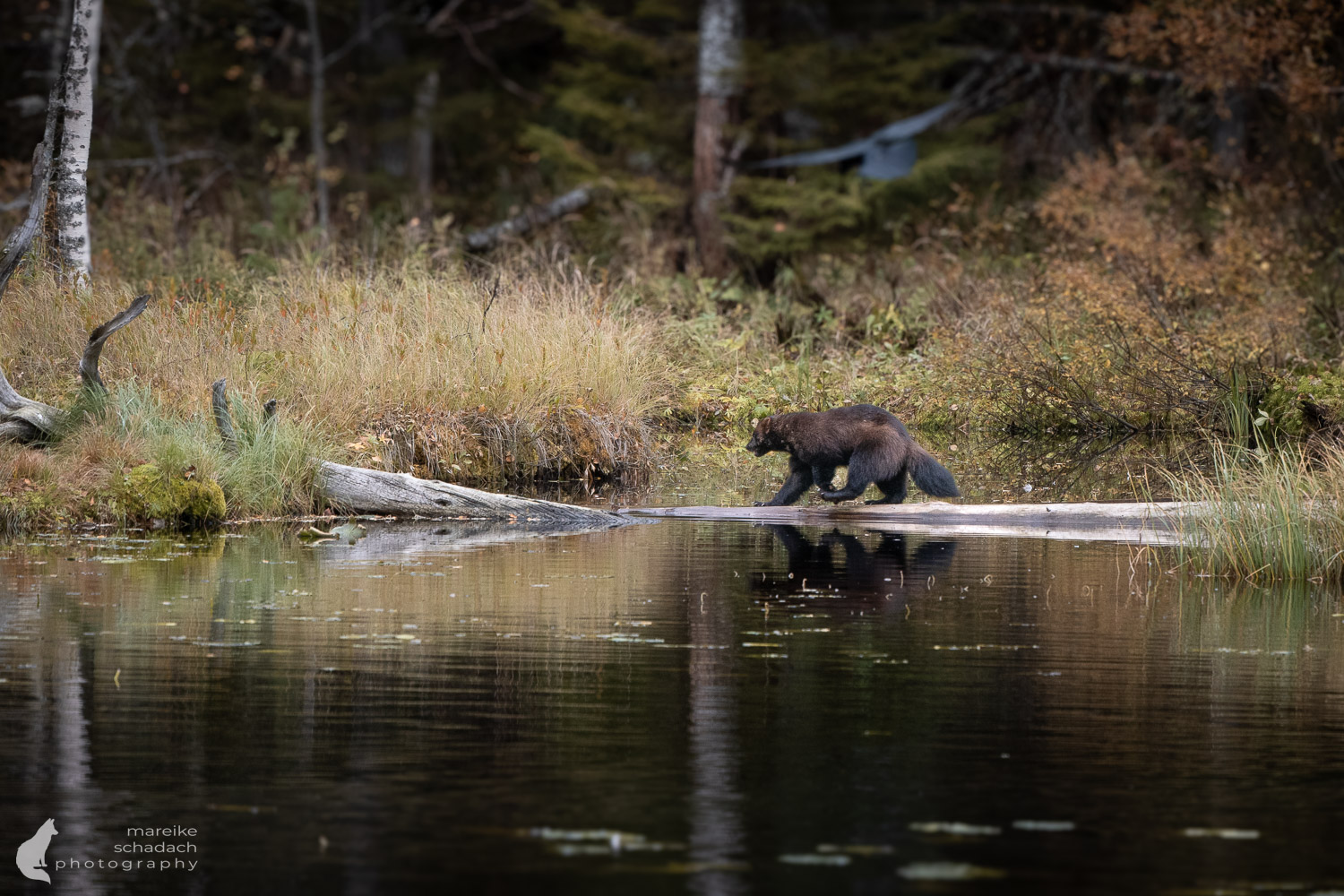
Conflicts with Reindeer Herding
Despite its small overall population, the wolverine is the most significant cause of damage to reindeer in Fell Lapland, especially since there is a strict ban on hunting wolverines. On the other hand, the forest wolverine has spread outside the reindeer herding area without harming or disturbing humans.
These facts are taken into account in the wolverine population management plan, which divides the distribution area into three regions: the northern and eastern reindeer herding area, the rest of the reindeer herding area, and the forest area of Finland. The key measures set out in the management plan relate to strengthening the wolverine population outside the reindeer herding area, reducing the damage caused by wolverines to reindeer, and improving methods for monitoring the wolverine population. The connection between the wolverine populations and those in Scandinavia and Russia should also be maintained.
Nevertheless, the majority of reindeer herders support the presence of large predators in reindeer herding areas, provided that the damage they cause is compensated and predator populations are controlled. However, in order to receive this compensation, the killed reindeer must first be found. To this end, the reindeer are fitted with tracking collars that switch on when the animal stops moving, enabling the herders to locate the carcasses. To prevent damage caused by large predators, some reindeer herders have also started fencing in their reindeer during the winter months.
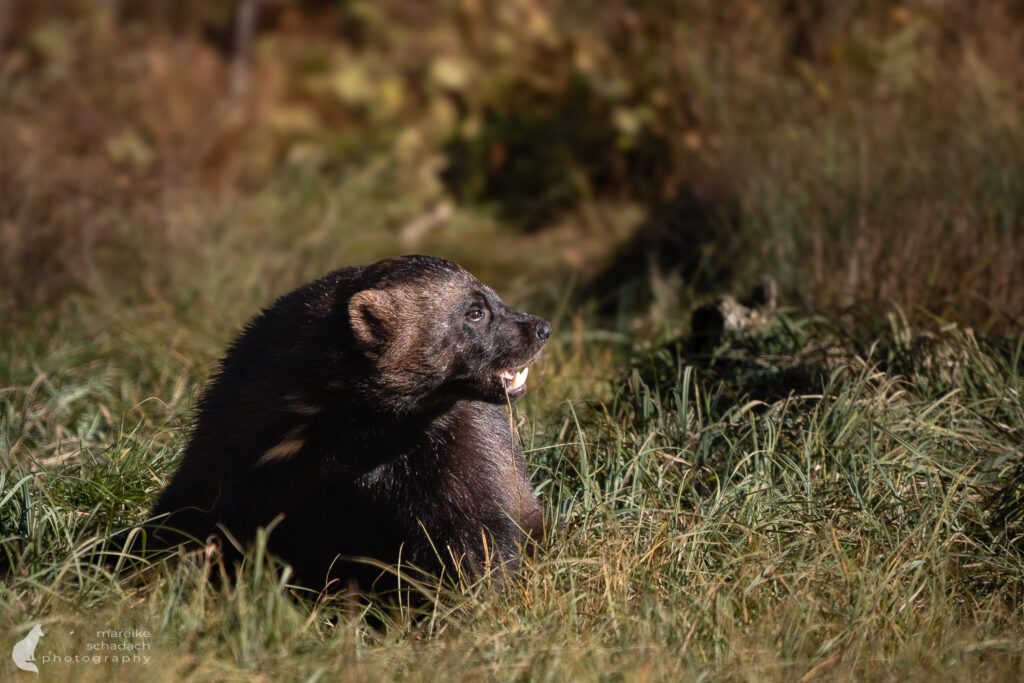
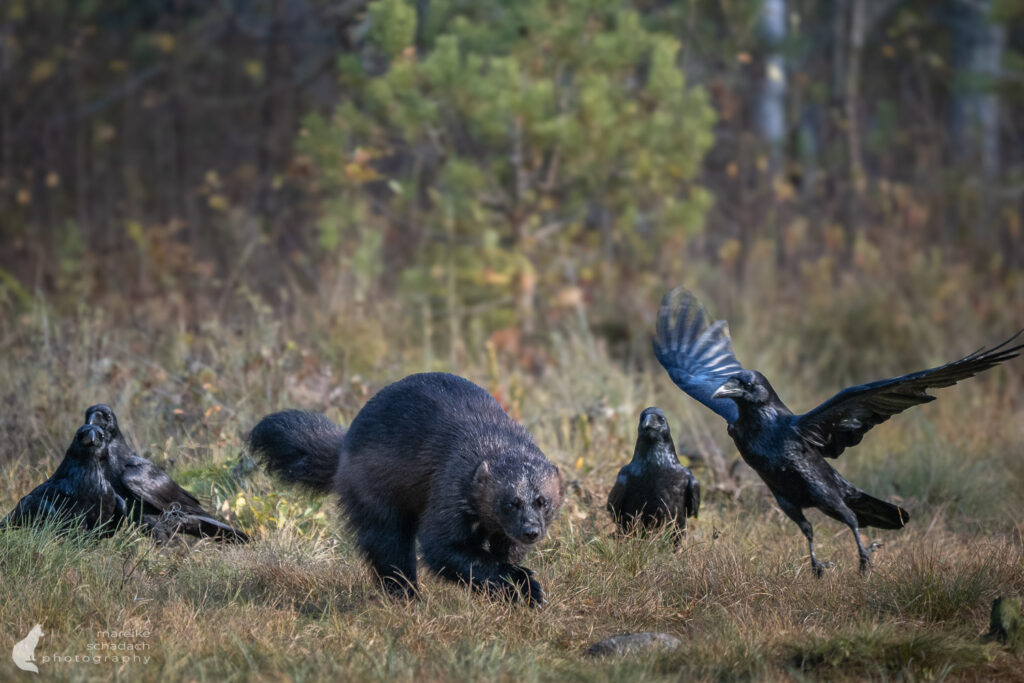
Back in the Forest with the Wolverine
I saw the wolverine again during my second stay in the observation hut. The wolves and ravens were also back. That evening, I watched the animals around my hut a little longer. I was so glad I was able to borrow the night vision goggles. Otherwise, I would have had no idea what was going on around me. The next morning, in daylight, the scene is completely different, another world. Once again, I sing a quiet song as I leave the scene of last night. At the top of the slope, I look back again, wondering if there might be someone else there who wants to say goodbye.
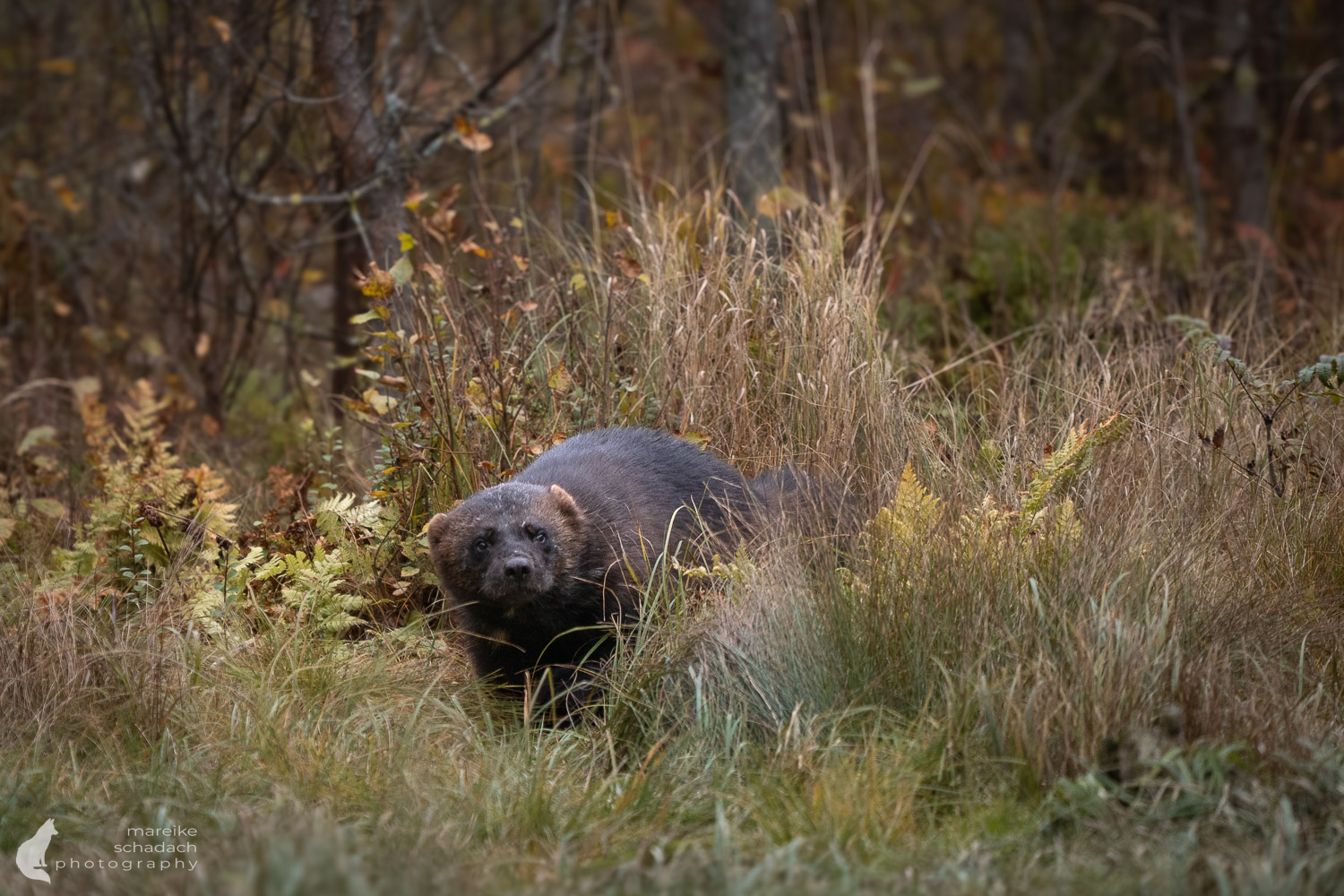
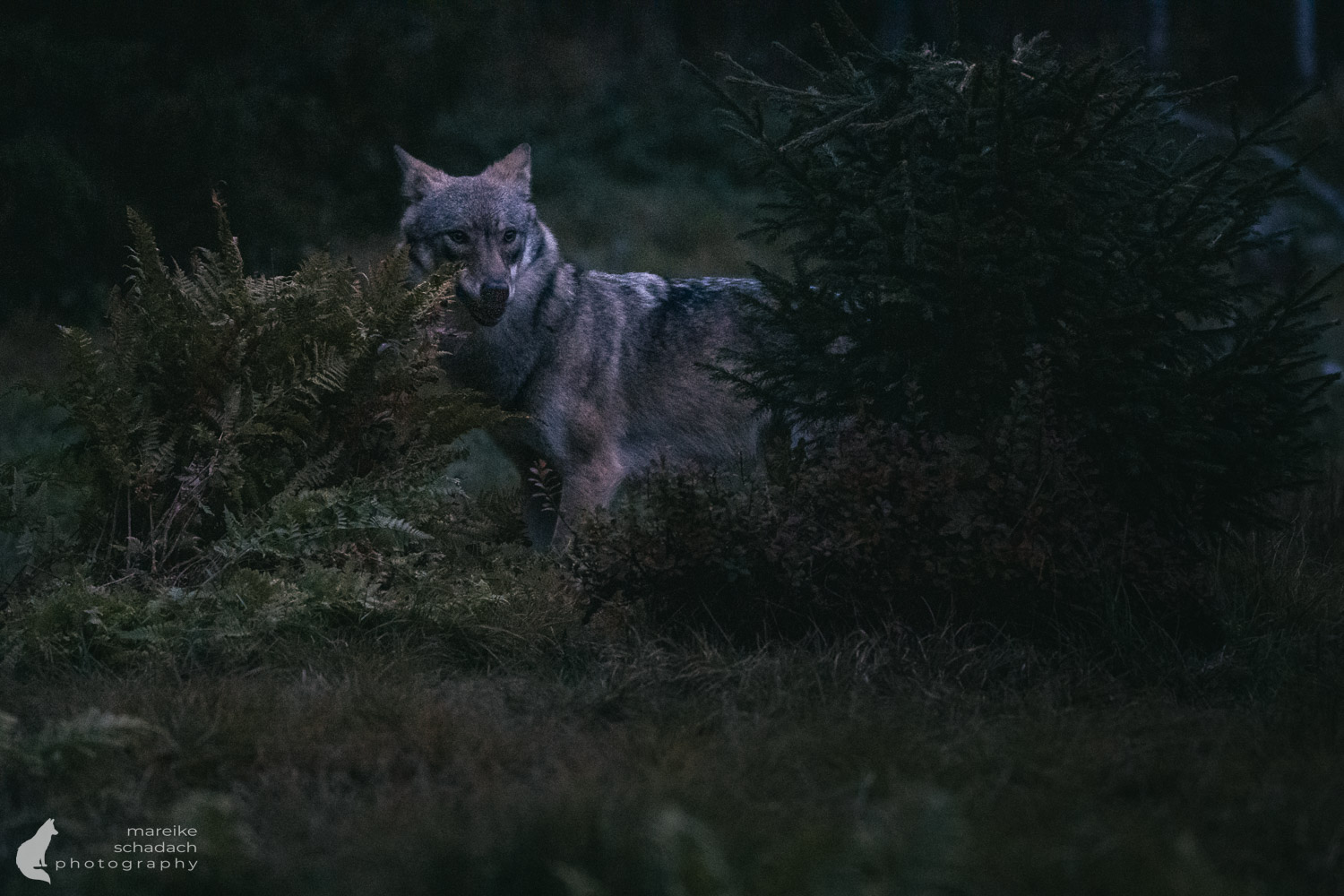
More Information about the Animals
Metsähallitus Parks & Wildlife Finland: https://www.largecarnivores.fi/species/wolverine.html
IUCN Red List: https://www.iucnredlist.org/species/9561/45198537
Book recommendations for Finland
You want to know where the journey goes? Then I can recommend these books*.
You can order the travel guides on Amazon by clicking on the pictures. If you buy a product via an affiliate link, I get a small commission, and you help me to keep filling Fernweh-Motive with interesting articles. The product will not be more expensive for you, and you will do me a huge favor.
Want to know when there are new articles on my blog? Then follow me on Facebook, Pinterest or Instagram. I am also very happy if you share my article with your friends.
